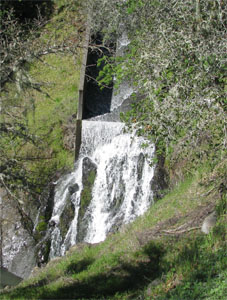by Paul Helliker
On July 26, the MMWD Board of Directors considered an initiative that had been circulated by Marin residents Bill Rothman, Loren Moore and Katherine Jain, for which they received more than 18,000 signatures of registered voters in the district. The board chose to forward the initiative to the Marin County Registrar for placement on the November 2, 2010, election ballot. This initiative would prevent MMWD from taking any further action on desalination, without an election and approval by a majority of voters—including evaluation of the technology; additional environmental studies required by regulatory agencies; assessment of renewable power supplies for a facility; planning, permitting or design of a facility; or construction of the project.
Because of these prohibitions, the MMWD board chose also to adopt an alternative ballot measure for placement on the November ballot. This measure would address the primary concern—construction of a $100 million desalination facility—and would require an election and majority approval before MMWD could proceed with construction or financing for construction. In advance of a vote, MMWD could proceed to evaluate and study desalination, including determining when it would be appropriate to solicit approval of the voters for such a facility.
Because water demand among MMWD’s customers has dropped by 15 percent in the past 18 months, the desalination project has been placed on hold by the MMWD board. MMWD staff is determining the cause of the reduction in water demand and the projections for demand in the future, and will recommend to the MMWD board in mid-2011 whether or not to reinitiate the desal project.
For recent news stories about the desalination measures, visit the following links:
Water Board Sends Two Desalination Issues to Ballot (Marin IJ)
Dueling Ballot Measures over Marin Desalination (San Francisco Chronicle)


 MMWD is working to reduce our environmental impact by installing three photovoltaic energy projects at District-owned facilities: the administration building in Corte Madera, the corporation yard, also in Corte Madera, and the San Geronimo Treatment Plant in Woodacre.
MMWD is working to reduce our environmental impact by installing three photovoltaic energy projects at District-owned facilities: the administration building in Corte Madera, the corporation yard, also in Corte Madera, and the San Geronimo Treatment Plant in Woodacre.